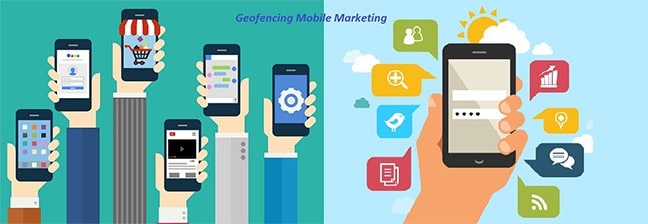DIGITAL MARKETING
Push notification advertising is a powerful tool for directly engaging with users on their mobile devices or desktops, offering real-time updates and personalized messages. This form of advertising ensures that your message reaches your audience even when they are not actively using your app or website. Here are some frequently asked questions about push notification advertising.
Push notifications are messages that appear on a mobile device, such as sports scores, discounts or invitations to flash sales. App publishers can send them at any time because users don’t have to be in the app to receive them. Push notifications look like SMS text messages and mobile alerts, but they only reach users who have installed the app. All of the major mobile platforms – iOS, Android and Windows – have their own services for supporting push.
By reaching users’ lock screens, push notifications provide convenience and value to app users. For example, users can receive:
Sports scores and news
Utility messages, such as traffic, weather and ski snow reports
Flight check-in, change, and connection information
For app publishers, push notifications are a way to speak directly to the user. They don’t get caught in spam filters or forgotten in an inbox: as a result, push click-through rates can be twice as high as email. They can remind users to use an app, even if it isn’t open. And they can drive such actions as:
Promoting products or offers to increase sales
Improving customer experience
Converting unknown app users to known customers
Sending transactional receipts right away
Driving users to other marketing channels, such as social networks
June 2009: Apple launches Apple Push Notification Service (APNs), the first push service.
May 2010: Google released its own service, Google Cloud to Device Messaging (C2DM).
May 2013: Google introduces “rich notifications”. Rich notifications can contain images, as well as action buttons. Action buttons let users take immediate action from a notification. For example, the user can play a song, open the app, or see more information.
September 2014: Apple added interactive buttons. These buttons allow users to send a response right away to the app publisher. Shortly after, Apple extended push notifications to the Apple Watch.
September 2016: Apple adds support for rich notifications in iOS 10.
August 2017: Google introduces notification grouping with Notification Categories and notification dots, similar to iOS badges, which alert a user to active notifications for an app.
September 2018: Apple introduces a number of notification updates – including notification grouping, quiet notifications for a less intrusive experience, and provisional authorization – which allow users to understand the value of notifications before opting in. Google introduces suggested notification muting in Android P.
August 2021: Google adds support for notification snoozing, along with a redesigned notification UX.
September 2021: Apple introduces focus modes for controlling how and when notifications arrive on a device; notification types for Passive & Time Sensitive notifications, along with new interruption levels for notification delivery; and notification summaries, allowing users to select apps to include in a cross-app notification roundup that can be scheduled for delivery at specific times throughout the day.
August 2022: Google will require users to opt in to notifications on Android devices with Android 13
Some of the actors in sending a push notification include:
Operating system push notification service (OSPNS). Each mobile operating system (OS), including iOS, Android, Fire OS, Windows, has its own service.
App publisher. The app publisher enables its app with one ore more OSPNS’s. Then the publisher uploads the app to the app store.
Client app. This is an OS-specific app, installed on a user’s device. It receives incoming notifications.
Adding to an app
The app publisher registers with the OSPNS.
The OS service provides an application programming interface (API) to the app publisher. The API is a way for the app to communicate with the service.
The app publisher adds a software development kit (SDK) to the app. The SDK is a code library specific to the OSPNS.
The app publisher uploads the app to the app store.
User activation
The user visits an OS app store, downloads the app and then installs it.
The user opens the app. Unique identifiers (IDs) for both the app and the device are registered with the OSPNS.
The IDs are passed back to the app from the OSPNS. They are also sent to the app publisher.
The app publisher receives and stores these registration details, including the IDs.
Sending
The app publisher composes a manual message through a message composer user interface. Alternatively, the publisher sets up an automated message to be sent via the API.
The publisher defines the audience to whom the push notification will be sent.
The publisher determines whether the message should be sent immediately or scheduled.
Push notifications can be targeted to segments of your user base, and even personalized for specific app users. However, they require managing user identification data and installing some kind of interface for writing, targeting and sending messages.
Opting in
Apple’s iOS requires users to grant permission before an app can send them push notifications. In the past, Android and Fire OS have not required user consent; however, this changed with Android 13. Obtaining user permission has always been important for the success of apps on iOS, and soon will be for Android as well. When you open a new app on your phone, you’re typically greeted with a screen asking whether or not you want to enable push notifications. A better approach is to show the value of opting in – maybe by offering a customized welcome series upon first open – and let users decide later. Median opt-in rates for iOS range from 58% in charity apps to 33% in games. High performing apps across all industry verticals (those in the 90th percentile) have opt-in rates above 50%. Travel, business and charity app opt-in rates lead verticals with rates greater than 70%.
Users see push notifications as banners and pop-up alerts on their mobile devices. Mobile operating systems show push notifications together in a single view, though users can customize the settings for each individual app. Apple’s iOS platform has a Notification Center where users can find all their unread messages in chronological order. Android devices show unread messages on the lock screen and allow users to set the number of notifications they want to see at once. Both platforms allow users to turn sounds on or off and pick the notification style they prefer. They also allow users to control whether badges appear on app icons and how many notifications are shown per icon.
Apple’s iOS platform asks users for permission to share their location, and Android allows users to opt in to location sharing as part of the app’s permissions setup during installation. Publishers can deliver more relevant messages by using location data combined with behavioral data. Examples include:
A home improvement app sends offers for cooling units during a regional hot spell.
A specialty boutique invites users within 50 miles of an invite-only VIP trunk sale.
A national sporting goods chain invites local shoppers in for local pro athlete autographs.
For publishers to maintain a direct path of communication with users, they must provide value through push notifications. If they don’t, the message will be ignored or turned off by the user. Analytics and measurement are important tools for improving your app’s performance. Push notification messaging strategies should be written to drive action; if this does not happen, analytics can be used to test alternative approaches. Methods such as maximizing opt-in rates, ensuring new users are properly onboarded and reducing app user churn rates are all key to an app’s success. Other methods include:
Matching up each user’s data across channels (web, mobile, store etc.) to better understand user behavior
Making it easy for users to share content with their social networks
Encouraging users to opt in by offering them incentives and examples of the value your notifications will provide
Optimize the app experience to keep customers engaged
Push notifications are a way for an application to send alerts to users outside of the app. They can be targeted to segments of your user base, and even personalized for specific app users. To deploy push notifications, developers must build and maintain an infrastructure that handles user identification data and installs some kind of interface for writing, targeting and sending messages. Platform vendors also provide such capabilities as:
Reporting
Scheduling
Mobile marketing automation
User attribute collection and segmentation
Data management
Security
Cross-platform support
Increasingly, app publishers pay for push instead of building it so that they can focus on building better app experiences.
Contact us today to learn more about how Push Notifications can help you connect with customers at each stage of the customer app lifecycle.

